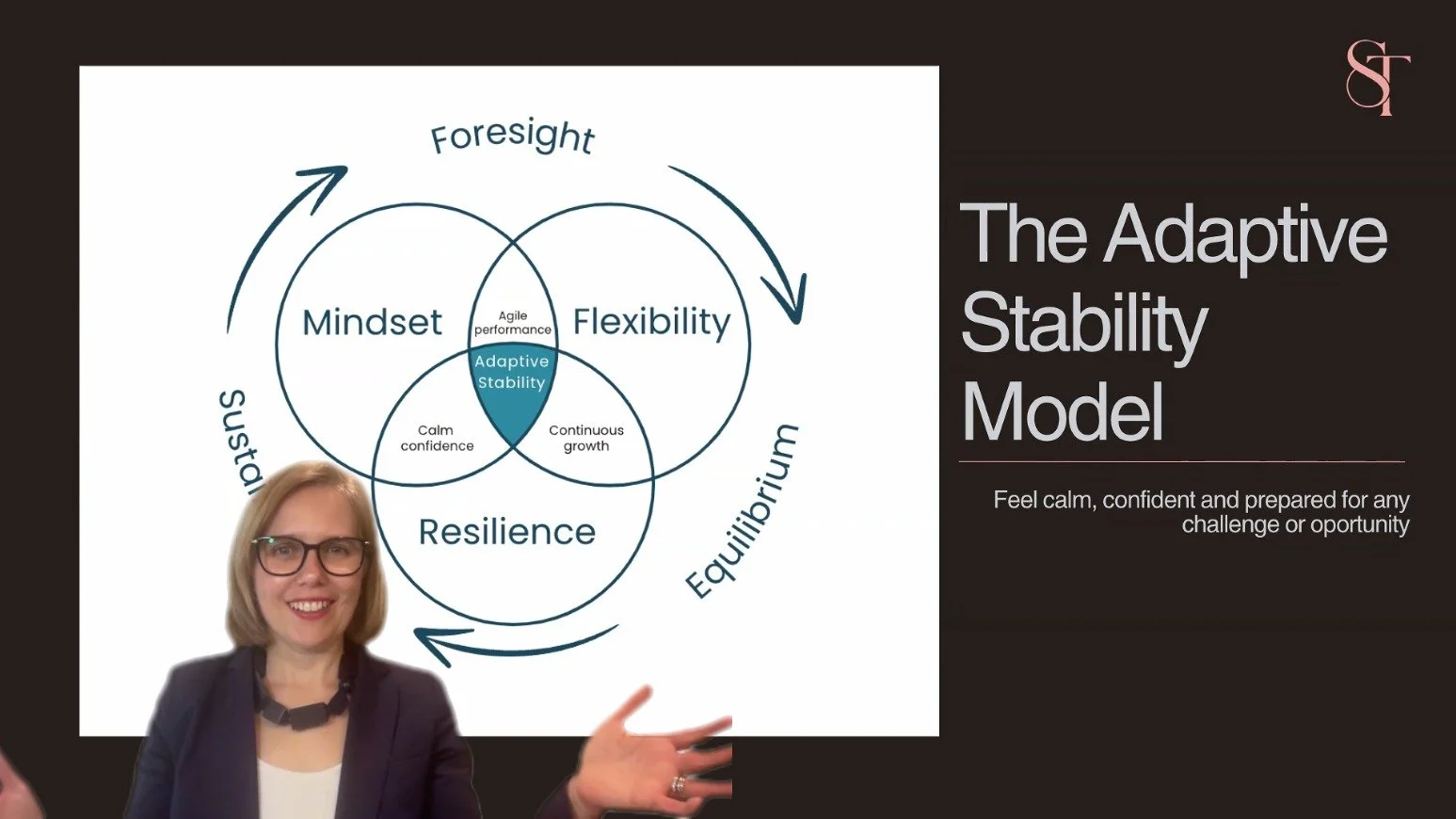Unlock Mental Precision: The Hidden Filter Sabotaging Your Leadership Impact
How small shifts in thinking can diffuse pressure, elevate your presence, and sharpen decision-making
“Every action you take is a vote for the type of person you wish to become.”
James Clear reminds us that our daily choices are not just tasks to get through, but building blocks of the leader we are becoming. Each pause to listen deeply, each decision made with clarity, each step towards progress — all are votes for the kind of leader you choose to be.
This idea captures why mindset matters so much. How we think shapes how we lead. It’s the filter through which we interpret challenges, make decisions, and connect with others. Mindset is the anchor of adaptive stability.
Why Adaptive Stability Matters Now
In my years leading risk, assurance, strategy and governance in fast-moving environments, I’ve seen that leaders who navigated complexity with confidence often draw on three foundational capabilities. Together, they form what I call Adaptive Stability:
Mindset – choosing how to respond with intention, even under pressure. For example: pausing before a high-stakes meeting to return to your calm centre.
Flexibility – adjusting course when circumstances shift while holding steady to what matters most. For example: realigning your team when priorities evolve, while keeping key outcomes in focus.
Resilience – maintaining energy, perspective and wellbeing across the long game. For example: setting up rhythms that support performance without depleting your team.
These capabilities strengthen one another. A grounded mindset makes space for flexibility. Flexibility protects resilience. Together, they form a stable foundation for clear and consistent leadership.
Mindset under pressure
Neuroscience shows us that when the brain perceives pressure, it narrows its focus and prioritises short-term fixes. While this is useful in genuine emergencies, it limits creativity, perspective, and collaboration in everyday leadership.
According to Dr. David Rock’s SCARF model, even low-grade threats like uncertainty or ambiguity shrink cognitive bandwidth and amplify short-term thinking. We become reactive instead of reflective.
This is where leaders must consciously intervene. By creating mental space — a strategic pause — we give ourselves the opportunity to reset, think clearly, and lead intentionally.
Dr. Carol Dweck’s research on growth mindset shows that leaders who believe abilities can be strengthened over time are more likely to embrace challenges, persist through setbacks, and create environments where others can grow too. It’s not just a personal mindset — it’s a cultural one.
Patterns that shape momentum
In a recent masterclass, I shared a few familiar mindset patterns that can happen when facing uncertainty and complexity:
Perfectionism — delaying progress while waiting for flawless results.
Fear of mistakes — holding back from new approaches because of what might go wrong.
Constant reactivity — spending energy on immediate demands while losing focus on strategic goals.
Recognising these patterns is an important step towards adaptive stability.
To shift them, leaders can draw on mindset levers:
Progress mindset – focusing on meaningful steps forward, one at a time.
Learning mindset – treating setbacks as valuable information for growth.
Strategic pause – creating a brief moment of space before responding, so you can act with intention.
These small shifts build steadier momentum — and over time, leaders notice stronger focus, clearer communication, and more sustainable energy in times of pressure.
Mindset in action
Mindset was the key to success during one of the most high-stakes projects of my career — a large regulatory reform that would ultimately shape the future of democracy in Victoria.
The project had immovable deadlines, intense scrutiny, and many stakeholders who were unhappy about the change. Pressure was high, and at times it would have been easy for the team to fall into common mindset traps — constant reactivity, fear of mistakes, or striving for impossible perfection.
In those moments, I would pause and remind the team to focus on what we could control. We used simple but powerful mindset levers: taking a strategic pause, keeping sight of progress rather than perfection, and returning to the long-term outcome that mattered.
Those small choices made all the difference. They gave the team clarity under pressure, steadiness in complexity, and confidence to move forward despite the noise around us.
Reflection for Your Leadership
Think about a recent challenge you faced. Ask yourself:
Which mindset patterns do you notice surfacing most often? How did they influence your decisions or energy?
What’s one lever I could practice to regain clarity when I feel stretched?
How might the team benefit if I spoke openly about making this shift?
The aim isn’t to avoid stress or eliminate challenges — both are part of leadership. The aim is to notice your filters, reset when needed, and create space for a more grounded response.
The Power is in the Pause
James Clear’s words remind us that each action is a small but powerful choice. Leaders who choose their actions with awareness shape not just outcomes, but the kind of leader they are becoming.
That was true for me during that reform project, and it holds true in everyday leadership. Mindset doesn’t need to be forceful to be powerful. It simply asks for awareness — and a willingness to choose a grounded path forward.
Adaptive Stability is built on mindset, flexibility, and resilience. It allows you to meet complexity with steadiness, bring clarity into movement, and lead with presence even in high-stakes moments.
This week, notice what your mindset is making room for — and where a small pause might offer a clearer, steadier path.
Where in your leadership could a mindset shift bring more ease and confidence — for you and those around you?

